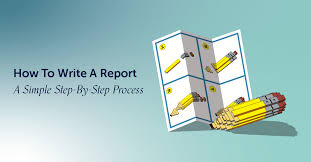Writing a business report may seem like a daunting task, but it doesn’t have to be! Whether you’re a seasoned professional or new to the corporate world, understanding the process of writing a business report can make your life a whole lot easier. This guide will walk you through each step, ensuring you create reports that are not just informative but also engaging and actionable. Ready to dive in? Let’s get started!
Understanding the Purpose of Your Report
Before you even think about starting your report, it’s crucial to grasp its purpose. What are you trying to achieve? Are you presenting data, analyzing performance, or making recommendations? Clarifying the goal of your report is the first step in this process. It’s like setting a destination on a map; without a clear endpoint, you’ll likely wander aimlessly!
Understanding your report’s purpose will guide every aspect of your writing, from the data you collect to the language you use. When you know what you’re aiming for, it becomes much easier to craft a report that meets those needs.
Identifying Your Audience
Now that you know why you’re writing, it’s time to consider who will be reading your report. Understanding your audience is essential for crafting a message that resonates. Are they executives looking for high-level insights, or are they team members needing detailed information?
Tailoring your report to meet the expectations and knowledge level of your audience will not only engage them but also make your report more effective. Imagine you’re telling a story; you wouldn’t use the same language for a group of kids as you would for a group of adults, right? Similarly, adjust your tone and terminology based on who will read your report.
Gathering Information and Research
With your purpose and audience in mind, it’s time to gather the data you’ll need. This might involve conducting surveys, analyzing past reports, or diving into financial data. The goal here is to collect relevant, credible information that supports your findings.
Think of your research as the foundation of a building—without a strong base, everything above it could crumble. The more thorough and precise your research, the more solid your conclusions will be. Don’t forget to note your sources, as citing them adds credibility to your report.
Creating an Outline
Once you’ve got your information, it’s time to organize your thoughts. Creating an outline is like drafting a blueprint for your report. It helps you visualize how the sections will flow and ensures you cover all necessary points.
Start with major headings like “Introduction,” “Findings,” “Analysis,” and “Recommendations.” Then, fill in the subheadings with key details you want to discuss under each section. This structured approach will save you time and keep your writing focused. It’s much easier to fill in a well-thought-out outline than to start from scratch!
Writing the First Draft
Now comes the fun part—writing your first draft! Don’t aim for perfection at this stage; just focus on getting your ideas down. Use clear, straightforward language and keep your sentences concise.
Remember, your report should be a conversation, not a lecture. Engage your readers with questions, analogies, and a friendly tone. For example, instead of saying, “Sales increased by 20%,” try, “Imagine what a 20% boost in sales could mean for your bottom line—more resources, better bonuses, the possibilities are endless!” This makes your report more relatable and engaging.
Revising and Editing
After you’ve completed your draft, take a break before revising. This allows you to return with fresh eyes. During revision, focus on clarity, coherence, and overall flow. Are your points well-supported? Does the report make logical sense?
Don’t hesitate to cut unnecessary information. Remember, brevity is key! After revising for content, shift your focus to grammar, punctuation, and formatting. Tools like Grammarly can be lifesavers here, but don’t rely solely on them—nothing beats a human touch for catching subtle errors.
Finalizing Your Report
The last step is to finalize your report. Ensure that it’s properly formatted, with headings and subheadings clearly marked. Visuals like graphs and charts can help illustrate your points and make complex data more digestible.
Before you hit send, double-check that all your sources are cited correctly. A well-organized, polished report demonstrates professionalism and can significantly boost your credibility.
Conclusion: Mastering Business Report Writing
Writing a business report doesn’t have to be overwhelming. By understanding the purpose, knowing your audience, gathering relevant information, creating an outline, writing a draft, revising, and finalizing your document, you’ll create reports that are not only informative but also engaging and effective. So grab your notepad, start brainstorming, and embark on the journey of writing a business report with confidence!


